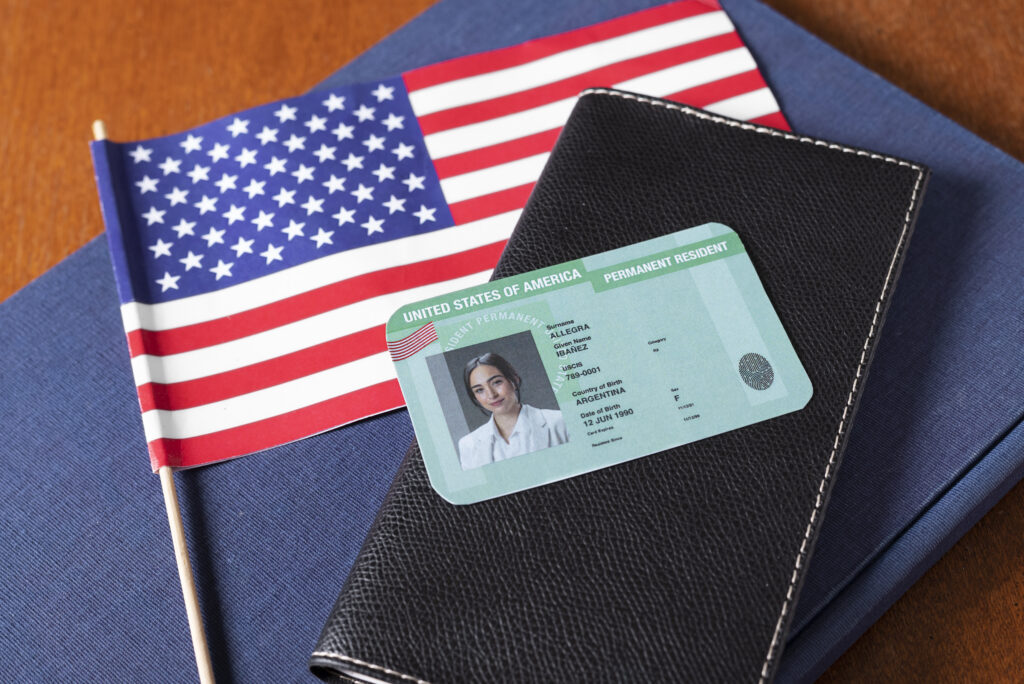Guide to US Applications • Undergraduate
US Undergraduate Standardised Testing: All You Need to Know
POSTED ON 07/04/2023 BY The Red Pen

Although several US colleges have introduced test-optional and test-blind admissions policies, standardised testing is still significant for undergraduate applications to US universities. It may be in your best interest to take these tests. Even though the test may not be compulsory, a good score may tip the scales in your favour and increase your chances of securing financial aid.
What is standardised testing for US undergraduate applications?
Standardised testing is a carefully constructed set of tests that follows uniform procedures in scoring, administering and interpreting results. Everyone taking these tests will answer the same questions or select questions from a common bank. These tests are then scored consistently, making it possible to compare the relative performance of individual students.
Why is standardised testing important for US undergraduate applications?
Generally speaking, standardised testing offers admissions committees a common data point to compare students’ abilities from different educational backgrounds and institutions. The purpose of standardised tests is to measure your readiness for US college. Scores from these tests are evaluated alongside other application components. These components include your GPA, academic records on your transcripts, letters of recommendation, essays, work experience, extracurricular activities, and additional information you prepare for consideration.
What are the standardised tests for US undergraduate applications?
For undergraduate admissions, standardised tests include the following:
- Scholastic Assessment Test (SAT)
- American College Test (ACT)
- English language proficiency tests: Foreign Language (TOEFL) and the International
- English Language Testing System (IELTS)
You aren’t required to take all of these tests. You may choose between SAT and ACT and select one language proficiency test. Read on for a comprehensive explanation of each test.
What is the SAT for US undergraduate applications?
The SAT is a standardised test for admissions to US colleges and universities. In 2022, College Board announced the SAT would be moving from a paper and pencil test to a digital format starting in March 2023 for international test takers. In spring 2024, all students will take the full SAT Suite of Assessments digitally. This move to the Digital SAT aims to enhance accessibility and streamline the testing process. The SAT assesses your ability to improvise and act in a certain situation. The SAT exam dates include the months of March, May, June, August, October, November, and December. To avoid paying extra, pay attention to the deadlines. You must register roughly a month before any SAT session. Test results are typically published around two weeks after a Saturday SAT.
The new Digital SAT features:
- The SAT is based on a scale of 1,600 points.
- It is adaptive, which means the difficulty of the questions will change based on how well you do on the test. If you are answering questions correctly, the questions will get more challenging. If you are answering questions incorrectly, the questions will get easier.
- It is around two hours, 14 minutes long, compared to its three-hour, paper-based predecessor.
- It uses interactive features, such as drag-and-drop and fill-in-the-blank questions.
- It is easy to access and can be taken on various devices.
- Students can use a calculator for the entire math section.
The new Digital SAT structure:
This two-hour, 14-minute SAT is divided into two sections:
1) The reading and writing section | 64 minutes
Students have 64 minutes to complete this section. It comprises brief reading passages or pairs of passages, followed by multiple-choice questions. These passages vary between 25 to 150 words, covering topics across literature, history/social studies, the humanities, and science. The questions in this section cover four main areas of content:
- Craft and structure
- Information and ideas.
- Standard English conventions
- Expression of ideas
Questions that assess similar skills and knowledge are grouped together and ordered from easiest to most challenging to assist with time management. The test is split into two modules, each consisting of questions from all four content domains.
2) The math section | 70 minutes
This section evaluates critical mathematics areas that significantly impact your success in undergraduate school. It covers:
- Algebra
- Advanced math
- Problem-solving and data analysis
- Geometry and trigonometry
Throughout this section, you will encounter multiple-choice questions that assess your fluency, understanding and application of essential mathematical concepts, skills and practices. Approximately 30 percent of the questions in this section are presented in a contextualised format. This means you need to use your math skills and knowledge in combination with an understanding of the given situation from science, social studies, or the real world to find the correct answers. The good news, unlike earlier, you may now use a calculator.
Retaking the new Digital SAT
Many applicants take the SAT multiple times, improving scores on the second or third attempt. Retesting also gives you a better grip on what to expect. But only some people need to retake the SAT, and only you can decide if you should. Ask yourself these questions:
- Did I reach my goal?
- Am I satisfied with my score?
- Does my score qualify me for the college I want to attend?
- Do I have time until the next SAT date before my college applications are due?
- Will preparing to achieve a few extra points take away too much focus from my school academics and other commitments?
The new Digital SAT scoring:
The 1,600 points and your section scores correspond to a percentile ranking. Your SAT percentile tells you what percentage of students scored the same as or better than you. For example, if you got a 60th percentile score, you’ve achieved the same or better than 60 percent of all test takers!
1,360 points (84th percentile) is a good score for schools such as Arizona State University (average SAT score: ≅1245) or Temple University (average SAT score: ≅1247). But it may not be sufficient for highly selective institutions, such as Massachusetts Institute of Technology, California Institute of Technology, Duke University, the University of Chicago, and Johns Hopkins University, where average scores are usually around 1,520 and above.
However, an approximate score of 1,100 works well for less selective colleges such as Indiana University Northwest (average SAT score: ≅1,000) and California State University, Stanislaus (average score: ≅1,000).
In short, a good SAT score is a score that makes you competitive for the schools you want to attend. For better scores, take up as many SAT practice tests as possible.
The new Digital SAT registration and fees:
You must have a valid passport to take the test as an international student. Expired passports or official letters stating that it is in the process of being issued are not acceptable.
You may register for the SAT on College Board. The registration deadline is four weeks before the test date. Here is the SAT exam fee and additional costs you may incur:
- Digital SAT Cost: $60 + $43 for international students
- Test centre fee (select locations only): $24. Here’s a list of test centres that are known to charge a test centre fee.
- Changing centre: $25. You must cancel and register for a new test if you want to change the test date. Learn how to change your registration information.
- Cancellation registration fee: $25
- Late Registration: $35
- First four score reports: Free (if ordered within nine days after the test date).
- Additional score reports: $12 per report (applies if you order them after nine days of the test).
- Rush reports: $31 if you need your reports sooner.
- Get scores on the phone: $15 per call (available at the same time as online scores)
- Archived scores: $31 per report (if you’ve taken the test earlier and need previous scores)
What is the ACT for US undergraduate applications?
Unlike the SAT, which is an aptitude test, the ACT is an achievement exam that measures your written, mathematical, verbal and scientific skills. It evaluates what you’ve learned in school and not just your ability to take on college coursework. An online test for students outside the US and Canada, the ACT measures English, reading, math, and science skills and includes an optional essay.
Features of the ACT:
- The ACT is scored on a scale of 1 to 36 for each section.
- Its four main sections are English, math, reading, and science, with an optional essay component.
- Time required for completion without breaks – Two hours and 55 minutes (without the essay) and three hours and 35 minutes (with the essay).
- There are 215 multiple-choice questions on the ACT.
- Questions are based on real-world topics students will likely encounter in college and their careers.
- It measures students’ critical thinking skills and ability to apply learnings.
Structure of the ACT
The ACT is a two-hour and 55-minute exam comprising four sections:
1) The English section | 45 minutes
The test comprises five passages, each followed by 15 questions. In total, you must answer 75 multiple-choice questions. The passages are drawn from fiction, nonfiction, and essays. Some questions ask you to identify and correct errors in grammar or punctuation. Other questions ask you to choose the most effective word or phrase to complete a sentence, and a few will ask you to evaluate a passage’s overall structure and style.
2) The reading section | 35 minutes
The reading section of the ACT assesses your ability to read and understand literature and social science passages. The reading section is divided into four sub-sections—three contain one long prose passage, while one section shall consist of two shorter prose passages. The passages are drawn from prose fiction, social studies, humanities and natural sciences. In total, you must answer 45 multiple-choice questions. In your answers, you must do the following:
- Determine main ideas using referencing and reasoning skills
- Locate and interpret significant details
- Understand sequences of events
- Make comparisons
- Comprehend the cause-and-effect relationships
- Determine the meaning of context-dependent words, phrases, and statements
- Draw generalisations
- Analyse the author’s or narrator’s voice and method
3) The math section | 60 minutes
The questions in this section require you to use reasoning skills to solve practical mathematical problems. While most questions are self-contained, some may belong to a set. For instance, you may have to answer multiple questions about the same graph or chart. You must have basic formulae and computation skills to complete this test. The ACT math section focuses on six topics:
- Pre-algebra (14 questions)
- Elementary algebra (10 questions)
- Intermediate algebra (9 questions)
- Coordinate geometry (9 questions)
- Plane geometry (14 questions)
- Trigonometry (4 questions)
4) The science section | 35 minutes
The ACT science section presents several authentic scientific scenarios, followed by multiple-choice questions that measure skills like interpretation, analysis, evaluation, reasoning, and problem-solving. Based on this section, students usually decide whether to take the ACT or the SAT. Those who believe this subject isn’t their forte opt for SAT because it doesn’t have a dedicated science section. But while basic know-how of biology, chemistry, earth and space sciences is helpful, you don’t need advanced knowledge to complete this test. The science section asks test-takers to use the information given in its passages. You can answer most questions by using your ability to read graphs and charts. This section covers the following:
- Data representation like graphs and tables
- Research summaries
- Conflicting viewpoints
5) The pptional Essay section | Additional 40 minutes
The section provides a prompt that challenges you to think critically about the issue and develop a unique argument. It will be scored on a scale of two to12 and is based on the following criteria:
- Quality of your writing
- Clarity of your argument
- Strength of your evidence
- Organisation of your essay
- Correctness of your grammar and mechanics
ACT Scoring
Much like the SAT, a good ACT score is relative and primarily based on the colleges you wish to attend. The higher your score, the better your chances of winning merit-based scholarships. A score of 29 places you in the top 10 percent of test-takers, making it an excellent score for admission to schools like Texas A&M University, The Pennsylvania State University, Virginia Polytechnic Institute and State University, and Baylor University. But 29 is a low score for super-selective institutions like the Ivy League colleges, Duke University, Massachusetts Institute of Technology, Stanford University, and the University of Chicago.
Retaking the ACT
There is no limit to how many times you can take the ACT. You can choose which score reports to send to colleges and prevent them from seeing fluke test scores or the number of times you sat for the test. All test dates will be seen if you send your superscore. (Read the “What is Superscoring” below)
The ACT registration and fees
The ACT, available year-round, usually requires online registration three to four weeks before the test date. Students can easily register for the exam, access their scores, and manage their testing information through the MyACT platform on the ACT website.
Here is the ACT fee structure:
- Cost of ACT (without essay): $171.50 – includes reports for you, your high school, and up to four colleges if codes are provided when you register
- Cost of ACT (with essay): $196.50 – includes reports for you, your high school, and up to four colleges if codes are provided when you register
- Test Option Change: $40 – applicable if you are absent on test day or switch to ACT without writing before testing begins
- Late Fee: $36 – charged for registration or test date change made after the registration deadline.
- Change Fee: $42 – charged if you change the test date or test centre
- Score Reports: First four free
- Additional Score Reports: $18
What is superscoring in the SAT and ACT?
Most US colleges will ‘superscore’ your SAT and ACT results, meaning they consider the highest section scores from all reported test dates. So, if you did well in mathematics during your first SAT exam, but your evidence-based reading and writing scores were better in your second sitting, the college will look at your highest scores in each section across both sittings.
But here’s where another key difference comes in. With the SAT, you must report your complete score from each test date you wish colleges to consider, even if they superscore. However, with the ACT, you can report individual section scores from different dates as part of a ‘composite superscore’.
SAT vs ACT – which one should you take?
The truth: It does not matter. Neither test is easier, and colleges view both equally. You need to take the exam that best suits your test-taking style. The easiest way to determine this is to try the following exercise: Without preparation, simulate the testing conditions and complete mock exams – uninterrupted, unaided, and entirely. Sign up for diagnostic tests with test prep professionals for the most accurate results. While your scores are unlikely to be high and similar on both accounts, the exercise will give you a sense of which exam would work for you.
In a nutshell, here are the differences between the SAT and the ACT:
| ACT | SAT | |
| What they measure | An achievement test measuring what a student has learned in school | An aptitude test testing reasoning and verbal abilities |
| Required components | English, math, reading, science | Reading, writing & language, math (with calculator + without a calculator) |
| Essay | Optional | Not Offered |
| Time allotted | 2.55 hours (without the optional essay)
3.55 hours (with the optional essay) |
2.14 hours |
| Scoring values | 36 points total (possible in each section). | 1,600 points total (section scores are added together for the final score). |
| Test months | February, April, June, July, September, October and December. | March, May, August, October, and December. |
| Superscore | Section scores from different sittings can be reported individually as part of a composite superscore to colleges that allow it. | The highest score across sittings will be calculated. You must report all scores from each sitting. |
What are English proficiency tests for US undergraduate applications?
Colleges look at how an international applicant fared on standardised assessments, like The Test of English as a Foreign Language (TOEFL) and the International English Language Testing System (IELTS), to measure language skills. US colleges commonly use the TOEFL test, which started as a paper-and-pen test, but now offers TOEFL iBT (online test) and TOEFL iBT Home Edition (after the pandemic). Both online editions have four time-bound sections with a 10-minute break.
Here are the TOEFL sections and the time required for each:
- Reading (54 to 72 minutes): It comprises three-four reading passages and 10 questions for each.
- Listening (41 to 57 minutes): It includes three-four + two-three conversations.
- Speaking (17 minutes): You must discuss four topics resembling real-life scenarios.
- Writing (50 minutes): It consists of an essay and written responses to a reading or a recording.
What are non-testing options for US undergraduate applications?
Over the past few years, and more so since the Covid-19 pandemic, several US colleges de-emphasising the importance of standardised test scores as part of your application process. Instead, they’re opting for new policies like test-optional, test-flexible and test-blind policies. Let’s understand these policies better.
1) The test-optional policy
Colleges with a test-optional policy accept SAT or ACT scores but do not require them in the application review process. Submitting your scores is your choice. Submit the score if you’ve done well on your test. Remember, a high score improves your chances of getting selected and earning financial aid. On the other hand, if your score is below average, you may choose not to share it and work on improving other areas of your application.
As Robert Schaeffer, Interim Executive Director of FairTest, noted, “The Covid-19 pandemic significantly impacted colleges going test-optional. Since the pandemic, the number of colleges requiring the ACT and SAT have dramatically decreased.
2) The test-flexible policy
The test-flexible approach is adopted by colleges that require you to submit standardised test scores in your application. But you have options. For example, some schools might waive their SAT or ACT score requirements if you meet a minimum GPA or apply to a specific programme. Others might let you send Advanced Placement scores instead. The rationale is that these scores demonstrate subject mastery and reveal your particular academic interests and motivations.
Test-flexible policies are college-specific. You must check your colleges of interest to ensure you fulfil the application requirements correctly. You can find the information on each school’s website. If not, call and speak to an admissions officer directly.
3)The test-blind policy
Test-blind colleges do not consider ACT/SAT scores, even if submitted. But there are variations to this admissions policy. Some colleges may exempt applicants who have scored above a certain GPA. Earlier, only a handful of colleges were test-blind, but in the wake of the uncertainties of the pandemic, 69 colleges welcomed this policy. A few of them include:
- Augsburg University (2-year pilot)
- California Institute of Technology (2-year trial)
- California State University system (23 campuses through Spring 2023 admission cycle)
- Cornell University (2-year trial at schools of Agriculture, Architecture, and Business)
- City University of New York system (11 campuses, 1-year pilot)
- Dickinson College (1-year pilot)
- Hampshire College
- Northern Illinois University
- Northern Michigan University
- Reed College (2-year pilot)
- Rhode Island College (1-year pilot)
- Saint Xavier University (1-year pilot, except for Nursing program)
- Stonehill College (1-year pilot)
- University of California system (State court order will not consider ACT/SAT scores for 2023 and 2024 applicants by Board of Regents vote)
- University of Washington – Seattle (1-year pilot with scores sometimes used to make decisions about wait-listing applicants)
- Washington State University (1-year pilot)
Here are six things you should know about studying in the US and a comprehensive guide to creating the ultimate US university shortlist. But should you need any assistance with your application, please get in touch. Our US undergraduate team looks forward to helping you.



